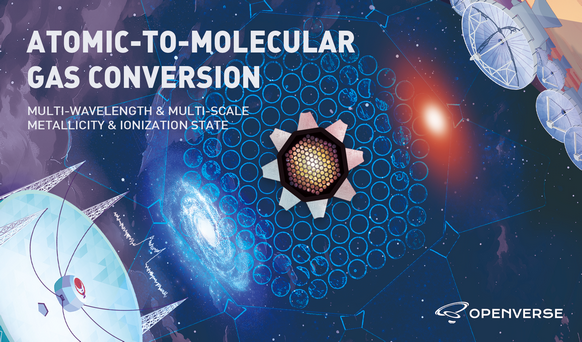FAST Reveals the Process of Atomic-to-Molecular Gas Conversion
The baryonic cycle of galaxies describes how gas cools, forms dense molecular clouds, and creates stars, with feedback heating the gas. This cycle links different phases of gas in and around galaxies. Cold gas, such as neutral hydrogen (HI) and molecular hydrogen (H2), is crucial for understanding the baryonic cycle and galaxy evolution. Galaxies vary significantly in their HI and H2 content and distribution, likely due to the sensitivity and dependence of atomic-to-molecular gas conversion.
To further explore this issue, Drs. YU Niankun, ZHENG Zheng, and TSAI Chao-Wei from the National Astronomical Observatories of the Chinese Academy of Sciences (NAOC) utilized data of neutral hydrogen, carbon monoxide, and optical integral field units. They combined this with new HI observations from the Five-hundred-meter Aperture Spherical Telescope (FAST) to establish a sample with multi-band observational data.
By using the mass ratio of molecular gas to atomic gas, they quantified the HI-H2 conversion efficiency. Additionally, they employed a three-dimensional optical diagnostic diagram to diagnose the types of the ionized gas regions, as well as their relative metallicity and ionization state.
The study found that as the molecular gas fraction increases, the metallicity of galaxies increases while their ionization state decreases. This result suggests that efficient gas conversion may occur in regions with high metallicity and low ionization states.
This study was published online in SCIENCE CHINA Physics, Mechanics & Astronomy on July 1, 2024.
This research deepens our understanding of gas conversion processes in galaxies, provides insights into the multiphase gas medium and chemical processes as well as baryonic cyle processes within galaxies, and offers crucial observational data to study theoretical models of galaxy evolution.
Notably, with the continuous deployment of large astronomical observatories such as FAST, we can expect to obtain more high-quality data on the gas components of galaxies. This will provide new opportunities for in-depth research on the baryonic cycle processes and the evolution of the multiphase interstellar medium in galaxies.
This research has attracted attentions from the astronomy community.“The work of Yu et al. therefore nicely shows the potential of combining resolved and global observations of galaxies to better understand the complex multi-scale processes that drive star formation and galaxy evolution,” said Prof.Amélie Saintonge, a professor at University College London, UK.
“This study offers new insights into the gas conversion processes within galaxies, highlighting the key role of metallicity and stellar mass surface density. It also points out the potential dependence on the ionization state of the gas, which could reflect the radiation field in the ISM,” said Prof. Renbin Yan from Chinese University of Hong Kong.
This paper is available at https://doi.org/10.1007/s11433-023-2387-2

As the journal cover of SCPMA, the image shows the FAST, ALMA, and MaNGA telescopes, two typical galaxies, and an H I spectrum. It highlights the merits of multi-wavelength and multi-scale data in revealing the atomic-to-molecular gas conversion. (Credit: OPENVERSE)